Tiny Pond, Big Impact: Simple DIY Ideas
Tiny Pond, Big Impact: Simple DIY Ideas
A tiny pond, nestled in a corner of your garden or even on a balcony, can transform your outdoor space. It offers a haven for wildlife, a calming focal point, and a surprisingly rewarding DIY project. This comprehensive guide explores simple yet effective DIY tiny pond ideas, helping you create a beautiful and biodiverse water feature without breaking the bank or requiring extensive expertise.
Part 1: Planning Your Tiny Pond
Before you dive into the construction, careful planning is key. Consider these factors:
-
Location: Choose a spot that receives at least some sunlight (ideally 4-6 hours) but avoids harsh afternoon sun which can overheat the water. Ensure the area is relatively level and accessible for maintenance. A slightly shaded location can help prevent algae blooms.
-
Size and Shape: Tiny ponds can range from small containers to larger, more elaborate designs. Start small, especially if it's your first attempt. A shallow pond is easier to manage and less likely to become a mosquito breeding ground. Consider the overall aesthetic of your garden and choose a shape that complements it – round, square, or even irregular.
-
Materials: The beauty of DIY lies in the versatility of materials. You can use readily available items like old tubs, sinks, or even repurposed containers like half barrels or large terracotta pots. Natural materials like slate, stone, or even a strategically placed log can enhance the aesthetic.
-
Lining: Pond liner is essential to prevent water leakage, especially if using a container that isn't waterproof. You can choose from a variety of materials, including butyl rubber, EPDM rubber, or even a more affordable pond liner film. Ensure your liner is the correct size for your chosen container, allowing for ample overlap.
-
Water Source: Consider your water source. Will you use a hose, a bucket, or rainwater harvesting? Rainwater is the most natural and eco-friendly option.
-
Budget: Set a realistic budget. DIY projects allow for flexibility, but it's wise to have a price range in mind before you start sourcing materials.
Part 2: Building Your Tiny Pond – Simple DIY Methods
Here are a few simple DIY methods for creating your tiny pond:
Method 1: The Upcycled Container Pond
This is the easiest and most affordable method. Find an old, waterproof container – a large plastic tub, a galvanized steel tub (ensure it's properly treated to prevent rust and leaching of harmful substances), or a ceramic sink.
-
Clean and prepare the container: Thoroughly clean the container, removing any dirt, debris, or residue. For metal containers, consider applying a sealant or rust-proof paint to prevent corrosion.
-
Add a layer of gravel: Place a layer of gravel or small stones at the bottom of the container to provide drainage and a base for planting. This will also help prevent the liner from being punctured.
-
Install the liner (if necessary): If your container isn't waterproof, carefully line it with a pond liner. Overlap the edges and secure them with rocks or stones. Ensure there are no creases or holes that could cause leaks.
-
Add water and plants: Carefully fill the container with water. Once the water has settled, add aquatic plants. Choose oxygenating plants like hornwort or waterweed to maintain water quality and prevent algae blooms. You can also include marginal plants (plants that grow at the edge of the pond) in containers placed partially submerged in the water.
-
Add decorative elements: Personalize your pond with decorative stones, pebbles, or even small ornaments.
Method 3: The Half-Barrel Pond

Repurposing a wooden half-barrel adds a rustic charm to your garden.
-
Prepare the barrel: Clean the half-barrel thoroughly and ensure it's free of any splinters or sharp edges. Apply a waterproof sealant to the inside of the barrel to prevent water leakage. Multiple coats are recommended for optimal protection.
-
Add pond liner: Line the barrel with a heavy-duty pond liner, ensuring it covers the entire inside surface and overlaps the edges. Secure it with rocks or stones.

-
Add gravel and water: Add a layer of gravel to the bottom, followed by water.
-
Plant selection: For half-barrel ponds, consider using a mix of marginal plants that can tolerate the shallower depth and smaller space.
-
Aesthetic additions: Add decorative elements like driftwood or river stones to enhance the rustic look.

Method 3: The In-Ground Mini Pond
This method is slightly more involved but allows for a more natural-looking pond.
- Dig the hole: Dig a small, shallow hole, ensuring it's level and the dimensions suit your chosen liner. The depth shouldn't exceed 12-18 inches.

-
Line the hole: Line the hole with a heavy-duty pond liner, ensuring there are no wrinkles or punctures. Overlap the edges and secure them with soil or stones.
-
Add gravel and water: Add a layer of gravel or stones for drainage and plant stability, followed by water.
-
Planting: Choose appropriate plants suited to the depth and size of the pond.
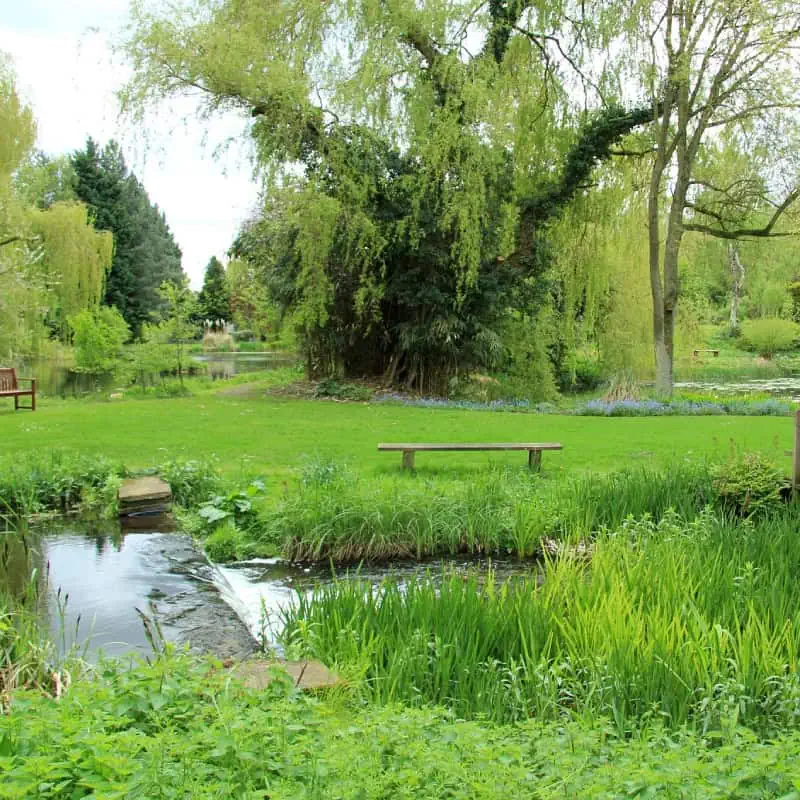
- Finishing touches: Add rocks and other decorative elements to enhance the pond's appearance.
Part 3: Maintaining Your Tiny Pond
Maintaining your tiny pond is crucial to prevent algae growth and maintain a healthy ecosystem.

-
Regular Cleaning: Remove any fallen leaves or debris from the surface of the water regularly to prevent decomposition and nutrient build-up.
-
Water Changes: Partially change the water every few weeks, especially during hot weather, to replenish oxygen and remove excess nutrients. The frequency depends on the size of your pond and the amount of sunlight it receives.
-
Algae Control: Algae blooms are common in small ponds. To minimize algae, ensure adequate plant life and avoid overfeeding fish (if you have any). Consider using a biological pond filter or adding beneficial bacteria to help manage algae. Regular water changes also help reduce algae growth.
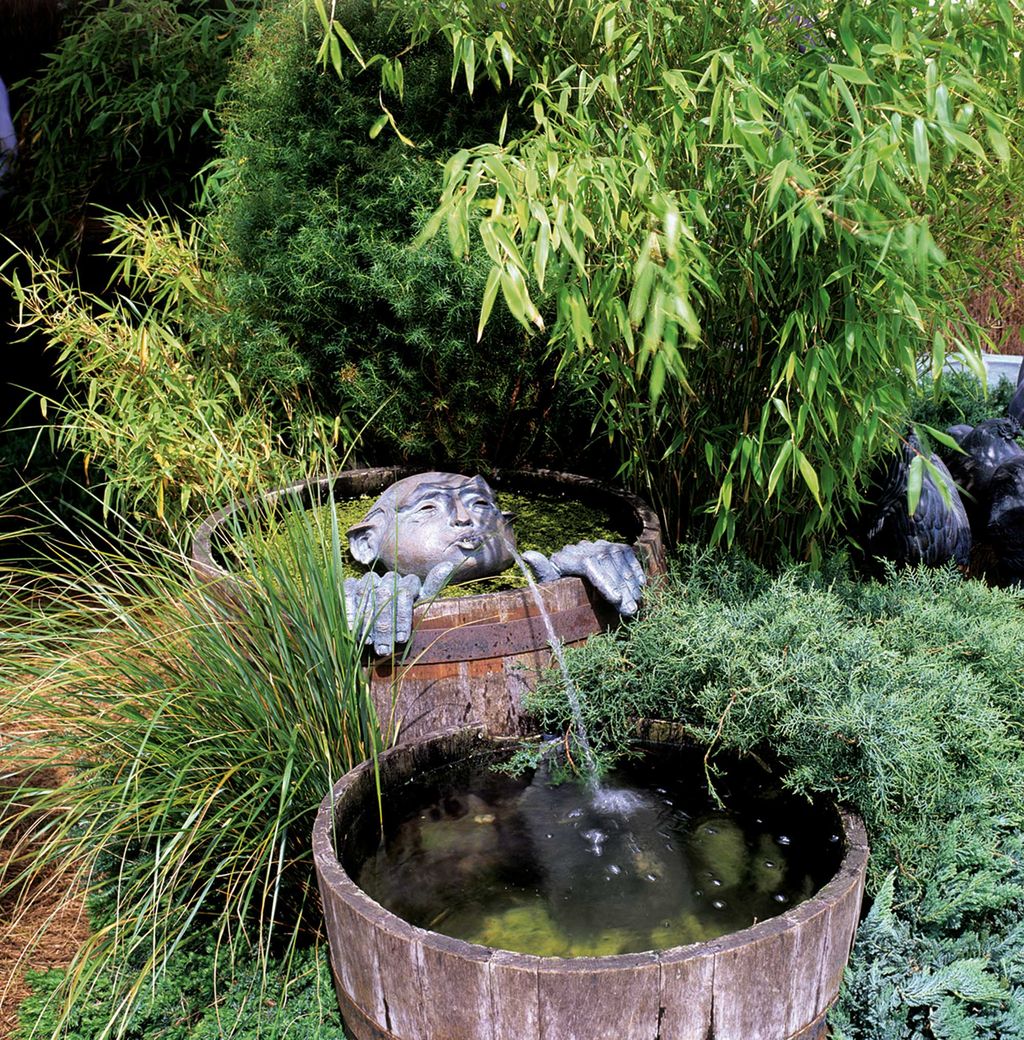
-
Plant Maintenance: Trim and remove dead or decaying plant matter to prevent nutrient build-up and promote healthy growth.
-
Pest Control: Monitor for pests like mosquitoes. Introduce mosquito-eating fish like Gambusia affinis (mosquitofish) if necessary, but be mindful of the local regulations and the potential impact on other aquatic life. Regular water changes also help control mosquito larvae.
Part 4: Enhancing Your Tiny Pond

To make your tiny pond even more appealing, consider adding these elements:
-
Water Features: A small fountain or bubbler can add visual interest and enhance oxygenation.
-
Lighting: Submersible pond lights can create a magical atmosphere, especially at night.
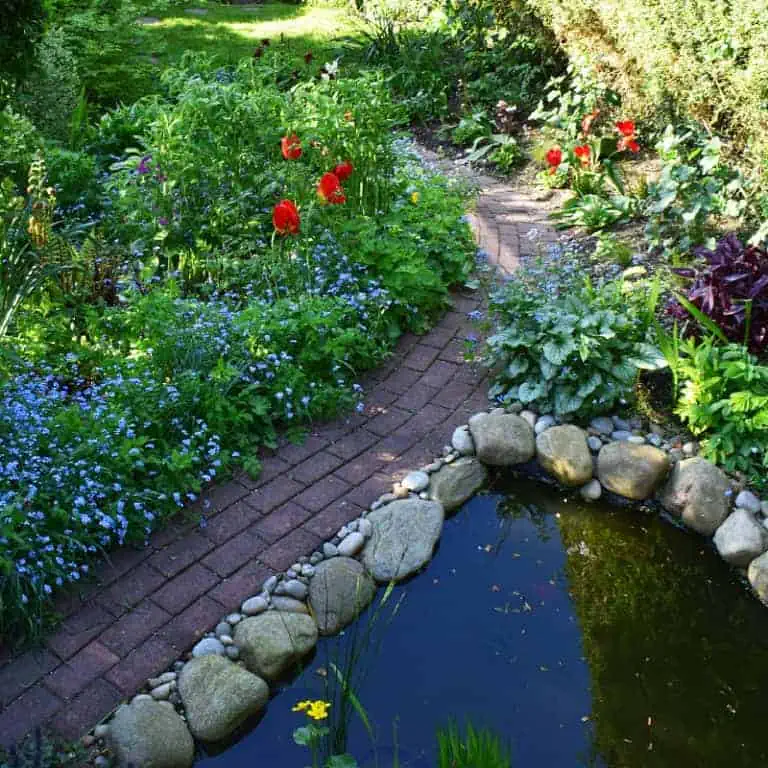
-
Fish (optional): Small, hardy fish species can add life and movement to your pond. However, ensure your pond is large enough to support them and that you understand their specific care requirements. Overstocking can lead to water quality problems.
-
Rocks and Stones: Adding different sizes and colors of rocks and stones creates visual interest and texture.
Conclusion

Creating a tiny pond is a rewarding and accessible DIY project that adds beauty and biodiversity to your outdoor space. By following these simple steps and understanding the basic principles of pond maintenance, you can create a thriving ecosystem that brings joy for years to come. Remember, start small, choose the right location and materials, and enjoy the process of building your own miniature aquatic paradise. The impact of this small project on your garden and your sense of accomplishment will be surprisingly big.
Tiny Pond, Big Impact: Simple Ideas for Small Water Features
Creating a tranquil oasis in your backyard doesn't require acres of land and a hefty budget. A tiny pond, even a small water feature, can significantly enhance your outdoor space, offering a haven for wildlife, a focal point for your garden design, and a source of soothing tranquility. This article explores simple yet impactful ideas for designing and maintaining your own mini-pond paradise, suitable for even the smallest of gardens.
Planning Your Tiny Pond: Location, Size, and Style
Before you dive into digging (pun intended!), careful planning is essential. The success of your tiny pond hinges on thoughtful consideration of several key factors:
1. Location, Location, Location:
The placement of your pond significantly impacts its success and aesthetics. Consider these points:
- Sunlight: Most pond plants require at least six hours of sunlight daily. Choose a location that receives ample sun, but avoid areas subjected to intense afternoon heat, which can lead to excessive evaporation.
- Accessibility: Ensure easy access for maintenance and enjoyment. Locate your pond near a water source for convenient refilling and cleaning.
- Aesthetics: Integrate your pond seamlessly into your existing landscape. Consider the surrounding plants, pathways, and overall garden design. A carefully chosen location can dramatically enhance the visual appeal of your entire outdoor space.
- Drainage: Avoid areas prone to flooding or poor drainage. The pond should have a slightly sloped bottom to facilitate water movement and prevent stagnation.
2. Size and Depth:

The size of your pond is limited only by your space and ambition. Even a very small pond, as little as 2 feet in diameter and 1 foot deep, can support aquatic life and add significant charm. However, larger ponds offer more biodiversity and design possibilities. Consider the following:
- Depth: Varying depths create different microhabitats, supporting a wider range of plants and animals. A shallow area (6 inches) is ideal for marginal plants, while deeper areas (1-2 feet) accommodate oxygenating plants and potentially even some fish.
- Shape: Natural, irregular shapes are often more aesthetically pleasing than perfectly geometric ones. A gently curving shoreline looks more organic and less artificial.
3. Choosing Your Pond Style:

The style of your tiny pond should complement your existing garden design. Popular options include:
- Formal Pond: These feature clean lines, symmetrical shapes, and often incorporate elegant materials like stone or concrete.
- Informal Pond: These mimic natural ponds with irregular shapes, meandering edges, and a more naturalistic look.
- Bog Garden: Combine a shallow, marshy area with water-loving plants for a unique and diverse habitat.
- Container Pond: For the smallest spaces, use a large container such as a half-barrel, ceramic pot, or even a repurposed sink as your pond base.
Constructing Your Tiny Pond: Materials and Methods
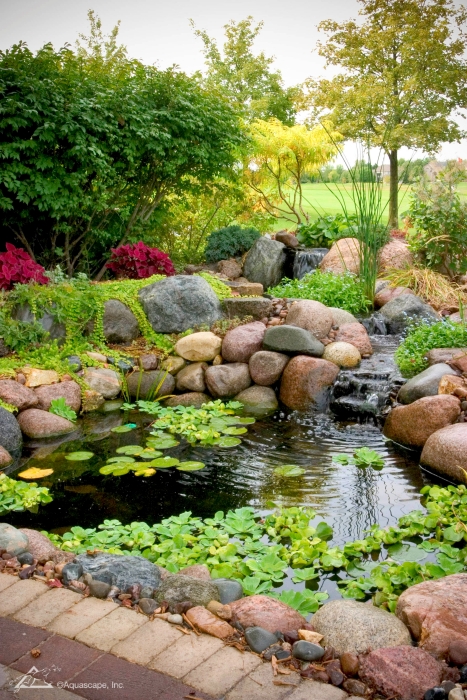
Once you've planned your pond, it's time to start building. Several options exist, catering to different budgets and skill levels:
1. Pre-formed Ponds:
These are readily available in various sizes and shapes, making them a quick and easy option for beginners. Simply dig a hole, place the liner, and fill it with water. These liners are typically made from durable, flexible materials, ensuring longevity. However, they may appear slightly artificial.

2. Liner Ponds:
These provide more flexibility in terms of shape and size. You'll need to excavate the hole according to your desired shape and depth, then line it with a pond liner made from butyl rubber or EPDM rubber. These are highly durable and resistant to punctures. Proper preparation of the hole is crucial to prevent liner tears.
3. Concrete Ponds:

These are the most durable but also the most expensive and labor-intensive option. They require expertise in concrete work and careful planning to ensure structural integrity. However, they provide a strong, permanent pond structure.
4. Natural Ponds:
For a truly rustic and sustainable approach, consider creating a natural pond using clay and rocks. This involves compacting clay to create a waterproof base, then adding rocks and stones to create the pond's shape and edges. This method requires significant expertise and is best suited for experienced gardeners.

Populating Your Tiny Pond: Plants and Wildlife
The beauty of a tiny pond lies not just in its appearance, but also in the life it supports. Carefully selecting plants and considering wildlife is crucial for creating a thriving ecosystem.
1. Essential Pond Plants:

Plants play a vital role in maintaining a healthy pond ecosystem. They provide oxygen, filter water, and offer shelter for aquatic life. Essential plants include:
- Oxygenating Plants: These plants, like Elodea and Ceratophyllum, release oxygen into the water, improving water quality.
- Marginal Plants: These plants grow at the pond's edge, providing shelter and habitat for aquatic insects and amphibians. Examples include Iris, Juncus, and Lythrum.
- Floating Plants: These plants, like Water Lilies and Water Hyacinths, provide shade, reduce algae growth, and add visual appeal.
2. Attracting Wildlife:

A well-designed tiny pond can become a haven for beneficial wildlife, including:
- Dragonflies and Damselflies: These insects are excellent natural pest control agents. Provide shallow, sheltered areas for them to lay their eggs.
- Frogs and Toads: These amphibians help control insect populations. Offer shallow areas with emergent plants for them to shelter in.
- Newts and Salamanders: These fascinating creatures add biodiversity to your pond. Ensure sufficient hiding places among the rocks and plants.
- Fish (Optional): If you wish to keep fish, choose species suitable for your pond's size and depth. Avoid overstocking, as this can lead to poor water quality.
Maintaining Your Tiny Pond: Simple Steps to Success
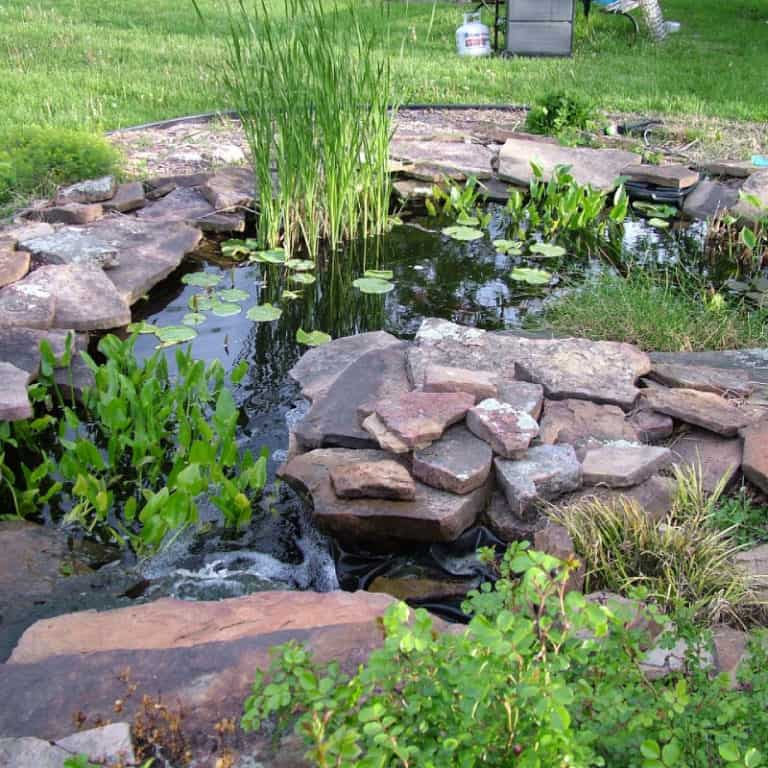
Maintaining your tiny pond requires regular attention but is relatively straightforward. Follow these simple steps:
- Water Level: Regularly check and adjust the water level, especially during dry periods. Top up as needed, using rainwater whenever possible.
- Cleaning: Remove any decaying plant matter or debris from the pond's surface and edges. Avoid using harsh chemicals; a net and a bucket are usually sufficient.
- Algae Control: Excessive algae growth can cloud the water. Control algae through proper planting (floating plants shade the water), and ensuring good water circulation.
- Winter Care: In colder climates, protect your pond from freezing solid by adding floating leaves or pond de-icer.
Conclusion: Embracing the Charm of a Tiny Pond

A tiny pond, carefully designed and maintained, offers a world of benefits. From the calming sound of trickling water to the vibrant life it supports, it transforms your backyard into a tranquil haven. The simple ideas outlined here provide a starting point for creating your own miniature aquatic paradise, proving that even the smallest of spaces can hold significant beauty and ecological value. Embrace the charm of a tiny pond and enjoy the tranquility and wonder it brings to your outdoor space.


